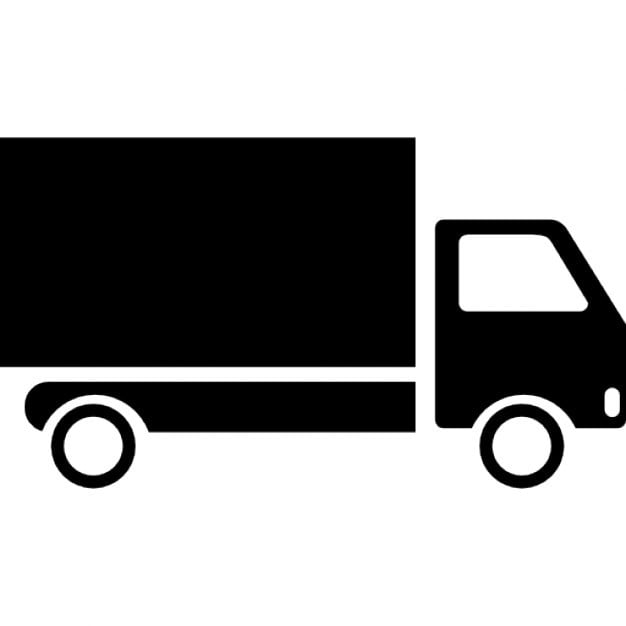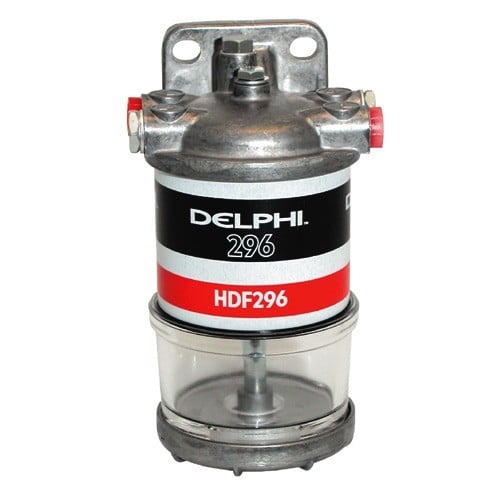
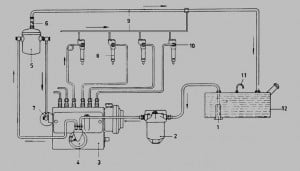
Delphi water / pre-filter Fuel system
This page has been translated with google translate, there may be errors in the stories.
On this page I want to explain a few things about the entire fuel system.
How it works, what you should pay attention to during the season and what you should pay attention to with maintenance.
It is the case that 60% of engine failures are a fuel problem.
There is regularly water and / or bacteria in the fuel, or air enters the system through outdated hoses.
This is partly due to hose connections that are no longer properly sealing.
And I also want to get rid of a few myths right away.
Like condensation in the tank, this is not the cause of frequent water in the tank.
A tank does not contain enough air to contain a lot of water vapor.
This is because most tanks are half full or more filled so that the air quantity is smaller than the tank content. In addition, air contains very little water vapor, even at 100% humidity and this will not occur in practice.
I also want to show how the feed pump works. And although this pump is very reliable, you will always have to perform some maintenance once a year.
We also have, of course, the injection pump. This is a complex device that you, as a layman, better stay off. But I will tell a few things about it anyway.
Then of course we have the various filters such as a water separator
in combination with a coarse filter and then a fine filter for the smallest dirt particles.
In between is a small sieve filter that is mounted in the lid of the feed pump.
At the end of this page I have written down some malfunctions and the solutions. These are the most common faults with a diesel engine and can often be remedied yourself.
There is also a description of smoke forms and what the possible cause of smoke formation can be.
The fuel system.
A properly installed fuel system works as follows:
When the engine is started, diesel is sucked out of the tank by the fuel pump.
The fuel passes through the coarse filter, also called a water separator, where any bacteria and water are separated from the diesel.
The fuel feed pump forces the fuel through the fine filter on the engine, after which it reaches the injection pump. From there the fuel goes to the injectors at high pressure.
The injection pump is deliberately supplied with too much fuel. This is fed back to the tank via the return line. This also applies to the leakage of the injectors.
The operation of the fuel system described above has a number of advantages over other systems.
The injection pump is cooled with fuel from the tank.
The water is separated from the fuel.
Any air bubbles are discharged through the return line to the tank.
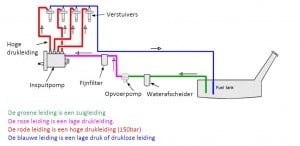
Engine fuel system.
Unfortunately, many fuel systems still have the return line on the fine filter (Yanmar)
which can cause engine failure. This also applies to return lines that end in the top of the tank.
The explanation for this is that if the return line is above the fuel level, air may enter the line causing fuel to flow out of the line and make the engine more difficult to start.
The same applies to a return line on the fine filter, there could be an unwanted air bubble, causing air to enter the filter.
This is especially true with older engines because the injection pump check valve sometimes starts to leak.
Fuel tank.
A fuel system does not only consist of a few pumps and filters, the tank is of course an important part of the system. Unfortunately, little attention is paid to this part of the system.
And this is not right because the fact is that most engine failures are due to contaminated fuel and pollution starts in the tank.
Fuel tanks come in roughly three materials, namely steel, stainless steel and plastic. Each type has pros and cons.
At some point point corrosion will develop on the bottom of a steel tank, because there is always some water in the tank, unless the tank has a so-called water bag.
Unfortunately, many fuel systems still have the return line on the fine filter (Yanmar)
which can cause engine failure. This also applies to return lines that end in the top of the tank.
The explanation for this is that if the return line is above the fuel level, air may enter the line causing fuel to flow out of the line and make the engine more difficult to start.
The same applies to a return line on the fine filter, there could be an unwanted air bubble, causing air to enter the filter.
This is especially true with older engines because the injection pump check valve sometimes starts to leak.

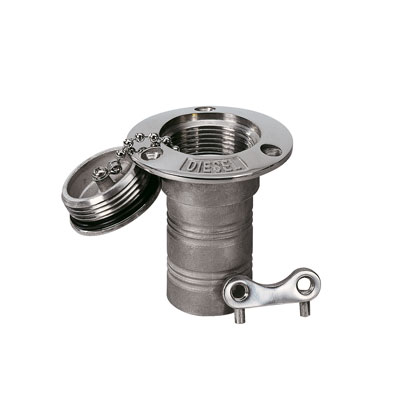
Tank with drain Fuel filler cap.
You can also visit my web shop for a fuel filler cap.
A water bag ensures that you can drain the water at the lowest point, which prevents bacterial growth in the tank.
Draining once or twice a year for inspection is sufficient. If you have to do it more often, there may be something wrong, for example that the sealing rubber of the filler cap no longer closes properly. This is quite a common problem.
A stainless steel tank has the advantage that in principle it does not rust, but if the welds of the tank are not properly treated on the inside, corrosion is still possible and the tank will eventually leak.


Stainless Steel Tank. Manhole covers
This stainless steel tank has a manhole for inspection, this should have every diesel tank.
A manhole is there to check the tank for bacterial growth and if this is the case, you can easily clean the tank through this manhole.
If the tank does not yet have a manhole, you can easily make it yourself in the top of the tank with Vetus manhole covers.
The plastic tank has the advantage that absolutely no rust can occur here and that they are also available in various shapes for a reasonable price.
The disadvantage is that it is difficult to make an extra connection yourself because the connection is difficult to make liquid and odor-proof.
Furthermore, these tanks do not have a drain tap at the bottom to drain any water.

Plastic fuel tank.
You can also visit my web shop for a fuel tank.
A tank also includes a level meter, these are available in several versions.
With steel tanks you sometimes see a transparent plastic hose.

But nowadays you would prefer a meter on your dashboard, there are two systems for that.
One where you stick 3 sensors against the tank or one where you place a float in the tank.
Both systems work fine.



Float system. Fuel gauge. Sensor system.
You can also visit my web shop for a fuel tank gauge.
Tank venting.
The tank breather is often not seen as an essential thing, but unfortunately annoying problems can still occur if the breather is mounted incorrectly.
For example, in sailing yachts the vent often flows into the cockpit, which sometimes causes annoying diesel smells in and around the cockpit. This can be prevented by installing a diesel odor filter.
It also happens that the air vent is mounted without a filter and / or a return elbow. As a result, if water flows into the cockpit during waves, water can enter the diesel tank.


The photo above shows how not to do it. The photo above shows a good construction of the tank breather with odor filter on.
Hose clamps.


Hose clamps made of stainless steel. The normal home, garden and kitchen hose clamp, avoid on a boat.
Use hose clamps to secure the hoses of the fuel tank and the like, they come in different designs and sizes.
Preference is given to a stainless steel hose clamp and then double. This is because if one piece goes or no longer clamps properly, there is always the second hose clamp that holds everything.
You can also visit my web shop for the right hose clamp.
Water separator.
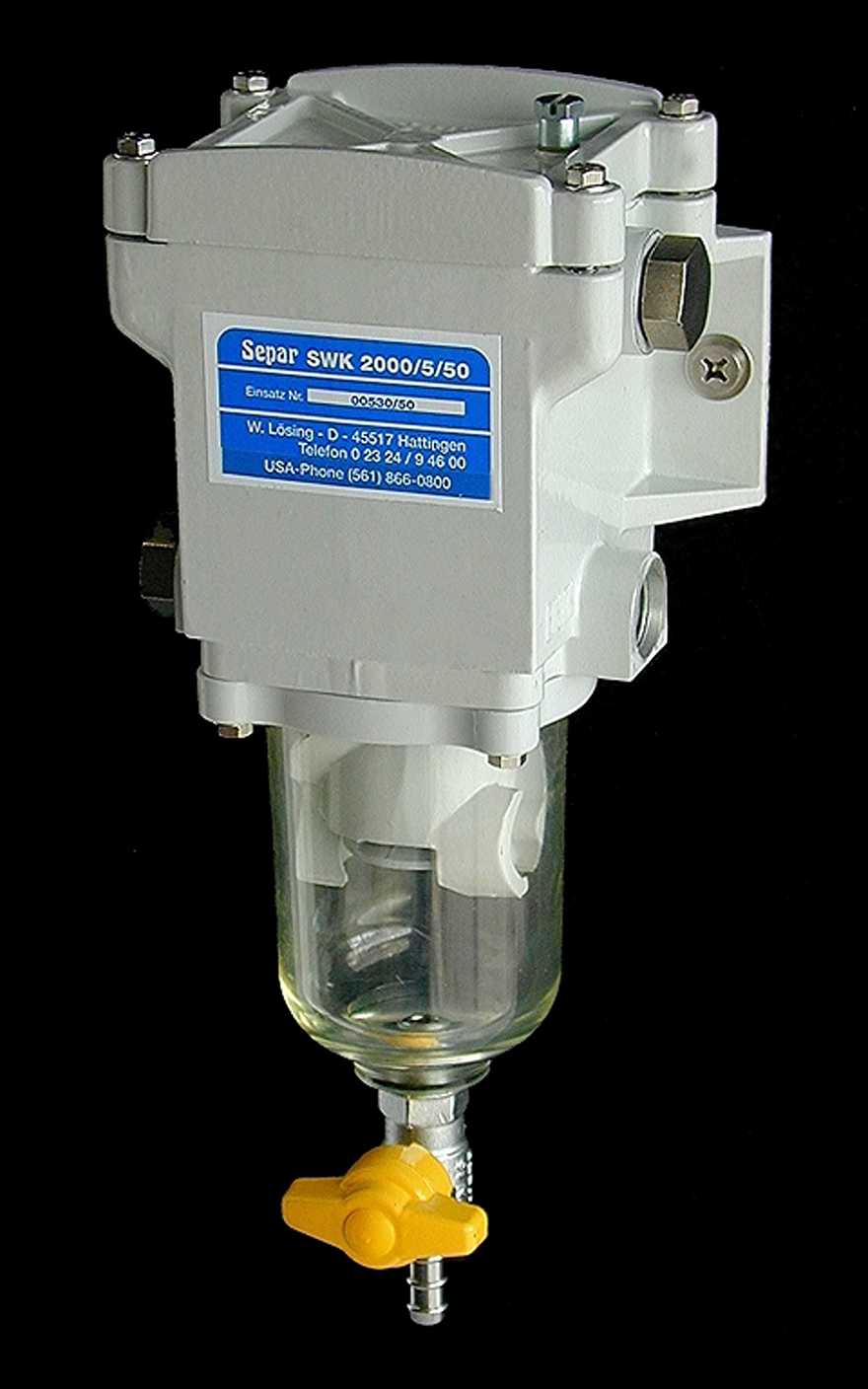
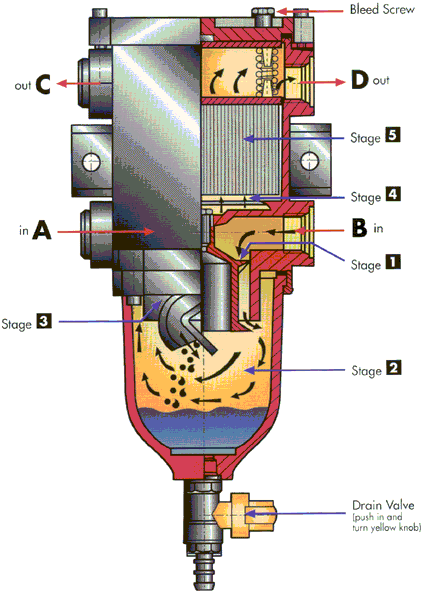
The Separ 2000 filter is a professional A Filter housing
filter system that optimizes the engine B Fuel inlet
protected. Unfortunately, it is also one immediately C and D Fuel output
expensive filter system.


The filter above is a commonly used filter. A Vetus water separator with a coarse filter.
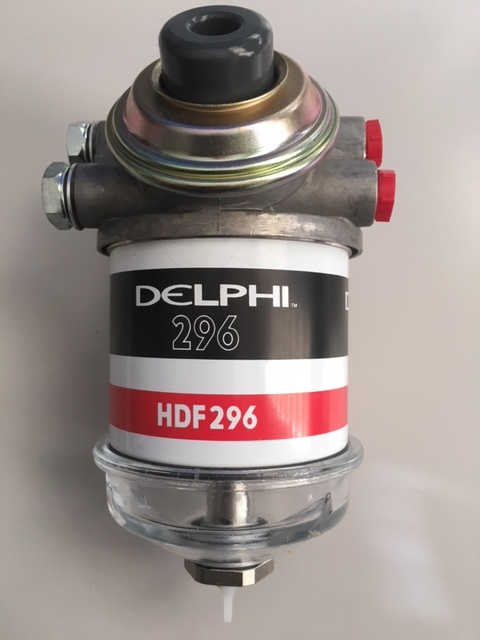

Water separator with lift pump, with this You don't have to worry about this water separator / coarse filter
you can make the fuel system easier for leakage of diesel leakage or air leakage because
venting and is especially useful if the tank this filter doesn't have O-rings like Delphi
lower than the engine's fuel lift pump.
The above water / coarse filters can be found in the webshop of this site, this also applies to fine filters for brands and types of ship engines.
Diesel bacteria.
Diesel always contains water and this is released when diesel is standing still in a tank for a longer period of time, whether it is the tank of the boat or the gas station, this does not matter.
Water is the food source of the dreaded diesel bacteria that clogs pipes and filters. Therefore, a good pre-filter is required on any diesel fuel system to avoid problems and wear on the fuel pump.
The bacteria live on the border of water and fuel and they are found in every type of diesel. After cooling, some of the water present can be released into the tank.
Because the sulfur content in diesel has been / will be reduced (legal regulation), bacteria and fungi are increasingly given the opportunity to grow.
Little water is needed in the diesel to promote bacterial growth. Add to that an ambient temperature of 30 to 40 C (diesel heats up by supply via the return pipe) and you have the ideal recipe for bacterial growth.
To prevent water and dirt from entering the tank as much as possible, it is wise to refuel only at petrol stations with a high turnover rate. To prevent or stop bacteria growth, it is wise to add an additive to the diesel that prevents bacteria and stops them if it is present. This agent is available in the webshop of this site.

A glass containing water and diesel and in which bacteria grow.
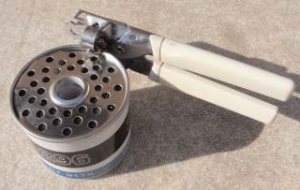

Vacuum gauge.
A double water separator with vacuum gauge.
There are people who have doubled their water separator. The reason for this is that they want to be able to easily switch to a different filter if one is dirty.
The vacuum gauge is connected to the suction pipe of the motor after the water separator.
The vacuum gauge gives an indication that the coarse filter is getting dirty. Because it takes more effort to suck the diesel through the filter, the negative pressure after the filter will increase and thus the meter will increase.
A vacuum gauge indicates a vacuum between 0 and -1 bar.
With an unpolluted coarse filter, the meter will indicate somewhere around -0.1 bar during normal operation. This can vary ± 0.1 bar during the day, due to temperature differences, among other things.
If the meter starts to increase, the filter will have to be replaced or a switch must be made to another filter (do this at -0.4 bar).
The vacuum gauge does not indicate anything if the fine filter on the engine is dirty.

You can also visit my web shop for a vacuum gauge.
Fuel lift pump.
The feed pump pumps the fuel from the tank to the high pressure pump under low pressure.
This pump is driven by the camshaft in small engines.
The feed pump comes in different sizes, but the differences are generally small.
The differences are in the mounting of the lid, with a central screw or with several on the edge of the lid and in the material of which the membrane is made.
The orange dotted line in the image is a filter that is washable. Often this is a brass plate that has to be checked for dirt once a year.
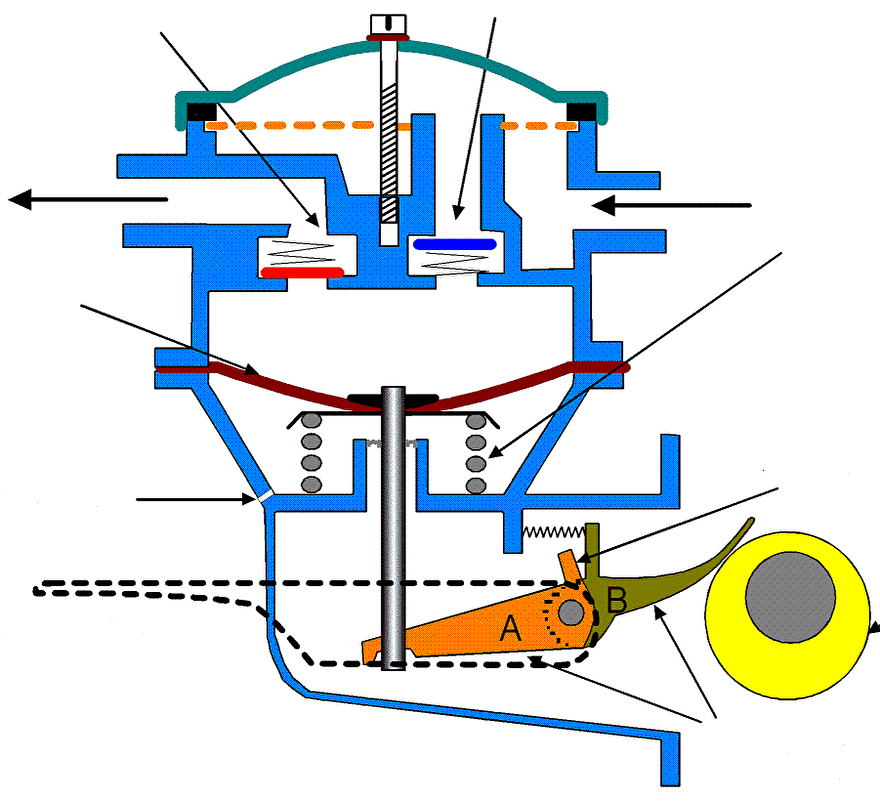
Levers A & B are independent of each other but have a common pivot point.
Mechanism B can only pull down and the spring pushes the diaphragm up.
If you want to bleed the fuel system because you e.g. have replaced the filter, you can pump the fuel to the next deaeration point with the feed pump,
this is in most cases the fine filter.
The delivery pump may not work, then the drive cam may be against the operating mechanism. To solve this, you have to turn the flywheel a little, then this mechanism will be released and you can operate the pump. If you still don't feel any counter pressure in the lever, it is possible that one of the valves is broken, so that the fuel is not pumped up. It is also possible that the diaphragm in the pump has ruptured. If this is the case, you will usually see fuel leaking through the indicator hole in the bottom of the pump.
You can also visit my web shop for a fuel lift pump.
Fine filter.
There are many engine brands, but the operation and construction of the fine filter is almost identical for all engines.
The difference may be that double filters have been placed to have sufficient capacity.
The fuel supplied by the feed pump goes through this filter to the injection pump.
The filter element consists of a metal canister, containing a special folded paper filter. The paper filter element is folded in such a way that approximately 3 m2 of surface is available in the small space to filter the fuel.
These types of filter elements are screwed to a filter housing that is mounted on the motor.
Older engines still have a closed filter housing in which a disposable filter element is placed. Filters are often used on new engines that you screw onto a filter housing, just like an oil filter.


Filter housing Separate filter element

This filter has not been replaced for years and no coarse filter has been present, otherwise this filter would not have been so dirty.


Filter housing with filter element.
Changing the fine filter.
Some tips:
Make sure the fuel tap at the tank is closed.
Provide enough old cloths.
Prepare a bucket with a plastic bag in it, it can be useful by holding the plastic bag around and under the filter when unscrewing.
The fuel will then run into the bag when unscrewed.
Make sure that the return line does not siphon from the tank.
A filter is usually secured with a central bolt with a red copper sealing ring underneath, this must also be replaced when replacing the filter.
This is to prevent leakage of diesel, but also air.
In most cases, only one central bolt needs to be loosened to separate the filter from the housing.
When you have removed the filter element, you can place the new one.
Just make sure the filter housing has been cleaned and the old O-ring removed.
Make sure that you use a new O-ring that creates the seal between the filter and the filter housing. The O-ring is usually included in the package.
Care must be taken when installing the new O-ring. This is because the O-ring actually has a rectangular cross-section and quickly rotates during installation, with the result that the filter does not close properly and can leak.
Then fit the new filter and open the bleed screw.
There is a small hole in that screw that allows air to escape from the filter once you open the tank valve and pump up the diesel.
If diesel comes out of the bleed bolt without air, you can close it and dry everything neatly.
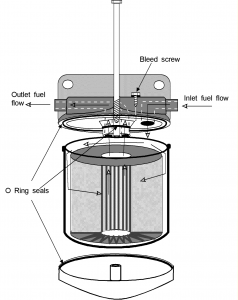
Filter housing element with filter element.
If you need a fine filter, you can find it in the site's webshop.
Injection pump.
The injection pump, also known as a high-pressure pump, is available in two versions.
Firstly, a line fuel pump where each cylinder has its own plunger where the fuel is fed to the injectors.
These plungers are moved by a camshaft located in the pump housing.
The fuel flows into the plunger housing through a hole in the wall.
The plunger has an angled groove that allows the hole to be closed at the beginning of the stroke or a little later.
The amount of fuel to be injected is controlled by turning the plunger.
The plungers are coupled to each other by a rod with teeth.
By sliding the rod, all plungers rotate simultaneously over an equal angle, so that the injectors receive more or less fuel.
This pump is mainly found on small and medium-sized diesel engines.
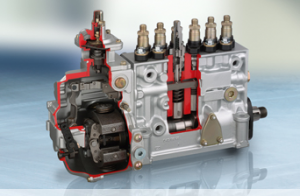


Line pump for a 6 cylinder Press valve Plunger pump
The second version can be found on more modern engines and especially on fast-running diesels, the so-called rotary pump. The advantage of this pump is that it is small and compact.
The fuel from the feed pump is pressurized in the pump by a vane pump.
The fuel then flows into the actual high-pressure pump through a delivery valve, which controls the amount of fuel that is pushed to the injectors.
This high-pressure pump consists of two plungers located in the rotor.
The amount of fuel determined by the control valve then flows into a space between the plungers, causing them to move apart.
When the rotor distributor rotates, the cams on a cam ring force the plungers inward, compressing the fuel to the required high pressure.
Via a channel in the rotor, the fuel is transported to the distributors, which then ensure that the fuel reaches the correct injector.
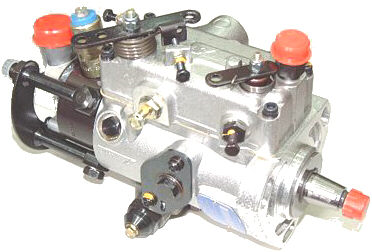
Rotary pump.
The disadvantage of this pump is that it is sensitive to contaminated fuel.
The advantage of a line pump is that if one of the pump elements fails, the other distributors will continue to function and the motor can continue to run.
This is not the case with the rotary pump because it only contains a single high pressure pump that supplies compressed fuel to all cylinders.
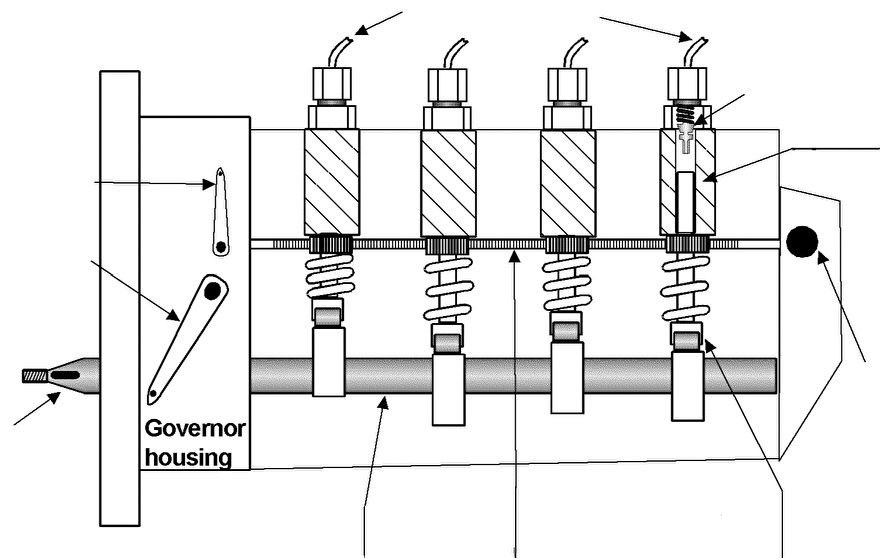
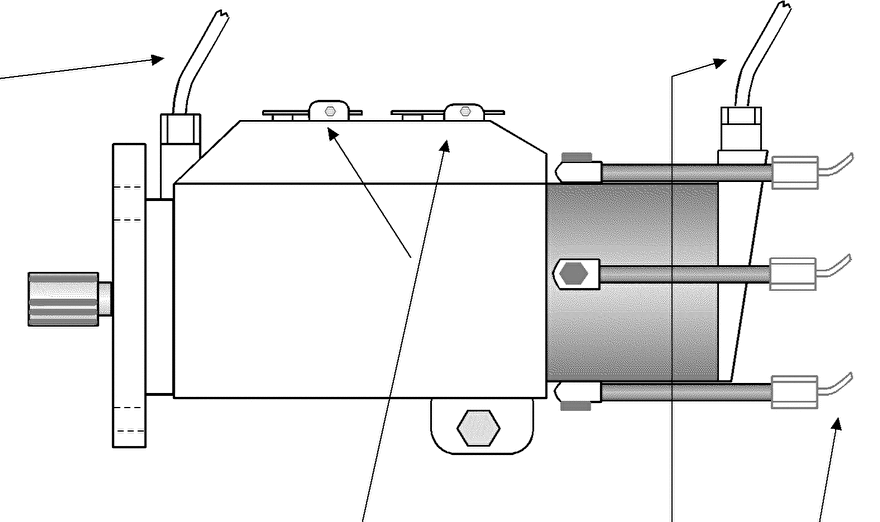
A cross section of an inline pump Rotary pump with mechanical governor.
Atomizers.
Atomizers come in different designs, such as tap atomizer, hole atomizer and one & two stage atomizer. There are also two types of injection techniques, directly in the cylinder space and indirectly in the swirl chamber.
Tap atomizer:
A tap atomizer is used in diesel engines with indirect injection and has an opening pressure between 100 and 135 bar.
The tap injector has 1 injection opening and the injector needle is released at a certain diesel pressure.
The fuel is injected into a pre- or swirl chamber. In this space, the diesel is mixed with air, creating a flammable mixture.
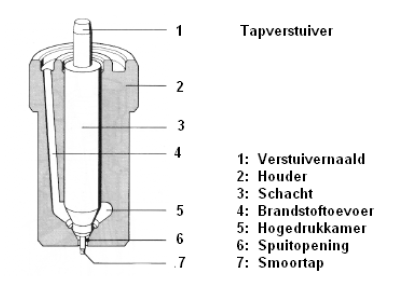
Hole atomizer:
A hole nozzle is used in diesel engines with direct injection and has several openings through which the diesel is pressed directly into the cylinder.
The combustion chamber is located in the piston base and the arrangement of the injection openings is precisely matched to the shape of the combustion chamber.
Due to this construction, the injector can only be placed in the cylinder head in one way.
The opening pressure of this atomizer is between 180 and 250 bar.
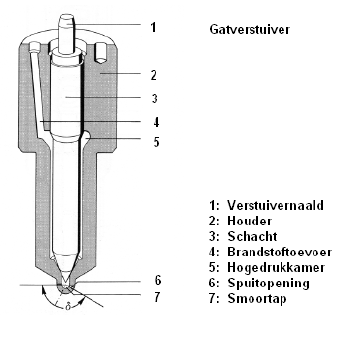
One- and two-stage atomizers:
Diesel engines with a direct injection have a relatively hard diesel knock, this has to do with the large increase in pressure in the cylinder due to the large amount of diesel that is injected in one go.
By making use of the so-called pre-injection, combustion is started gently, reducing the diesel knock a lot.
The atomizers have 2 springs, a normal spring and a weak spring. Due to the weaker spring, the needle will be able to lift a little at low pressure, thus initiating combustion.
The needle of the atomizer hits a stop that is trapped by a strong spring. The pressure will continue to rise to the normal opening pressure and the needle will be fully open at that point (the main injection).
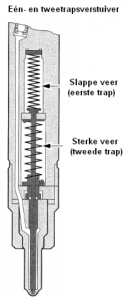
The fuel that comes out of the injection pump under high pressure is very finely atomized by the injector in the cylinder.
In addition to an inlet for fuel, there is also a return line, which means that fuel that was not needed is returned to the tank.
The inside of the atomizer is almost completely occupied by the atomizer needle, the pressure pin and a strong spring.
The fuel is fed in from the side and then flows through a narrow channel to the pressure chamber just above the atomization hole in the injector tip.
This hole is normally closed by the tip of the injector needle, under pressure from the spring acting on the needle via the pressure pin.
When the injection pump delivers a pulse of fuel, the pressure in the pressure chamber rises such that the needle is pushed up against the spring force.
When the injection pump delivers a pulse of fuel, the pressure in the pressure chamber rises such that the needle is pushed up against the spring force.
The fuel is now forced into the cylinder along the needle through the atomization hole.
When the pressure in the chamber drops, the needle closes the nebulization chamber again.
The needle will only move up and down very slightly each time fuel is injected. But with a great speed, which makes lubrication necessary.
This is done by running a small amount of fuel past the needle and the push rod. This leaked fuel is discharged to the tank via the return pipe.
An atomizer is an extremely accurate product and it is therefore not advisable to disassemble it yourself, if you suspect that there is something wrong with it.
It is best to take the atomizer to a specialized company.
There they have special test benches to test the atomizer for atomization and tools to make the atomizer like new again.
If you have the atomizer tested or overhauled yourself, it is necessary that when you replace the atomizer, replace the burn plate. This is the seal between the atomizer and the combustion chamber.
If an injector is worn or damaged, the engine will run poorly and produce more smoke.
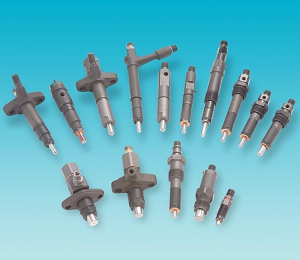
This photo shows a number of different atomizers.
Fuel related engine failures.
If an engine does not start immediately and therefore has to be started for a long time, the fuel may have run out of the pipes after a long standstill.
This can be condoned by first operating the feed pump before starting. With this you pump the fuel up to the injection pump and the engine can start faster.
This malfunction often occurs with older engines and is the result of a leaking valve in the fuel pump.
This does not have to be a problem as long as the fuel return line ends at the bottom of the fuel tank so that no air can enter the system.
It is also possible that the diaphragm of the feed pump is broken. Because it has an indicator hole, this is easy to determine. Removing the lid is of course also a way to inspect the membrane, so you can immediately check the filter to see if it is not contaminated.
Smoke shapes.
In general (say as a rule of thumb) you can say with diesel exhaust:
White / light gray and smelly smoke: poor combustion due to low compression, too cold engine or late injection.
White vapor (not smelly): steam due to insufficient water injection at high engine load.
Bluish smoke: worn piston rings, cylinders and valve guides or poor combustion due to excessive lubricating oil consumption.
If smoking is accompanied by knocking, it can also indicate an open blocked atomizer.
Black smoke: poor combustion due to too much fuel and / or too little air. Can also occur with heavy engine load in combination with malfunctioning fuel injection equipment.
Gray (blue) is really unburnt diesel oil. Then the injector tips could be in an initial stage of some wear.



